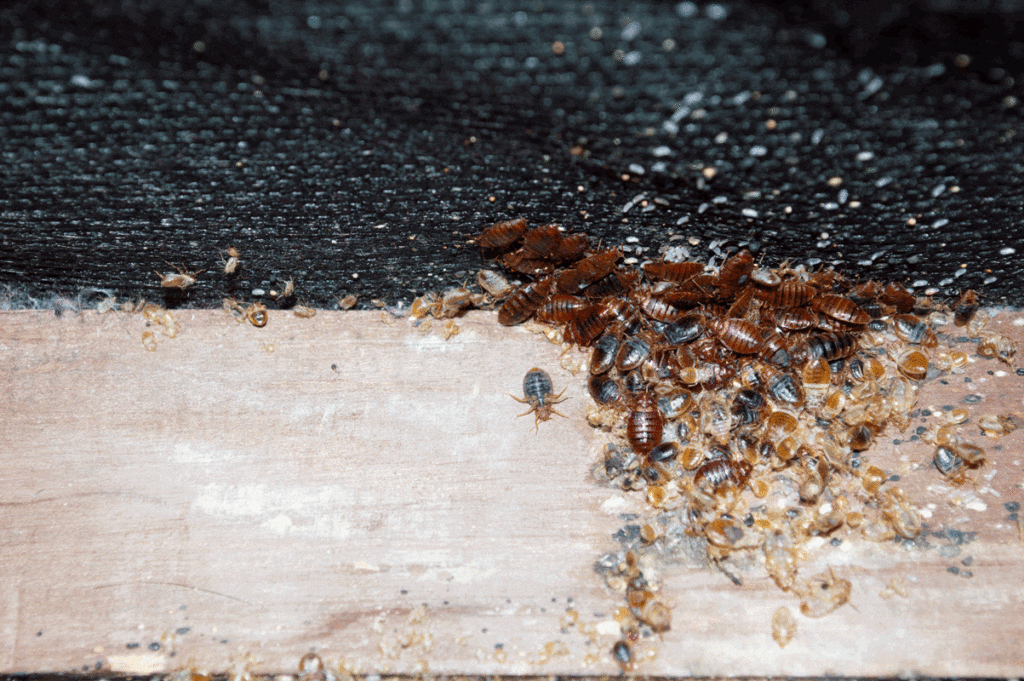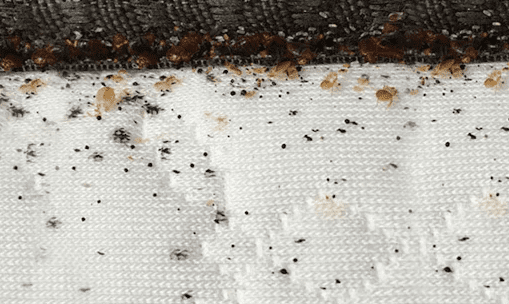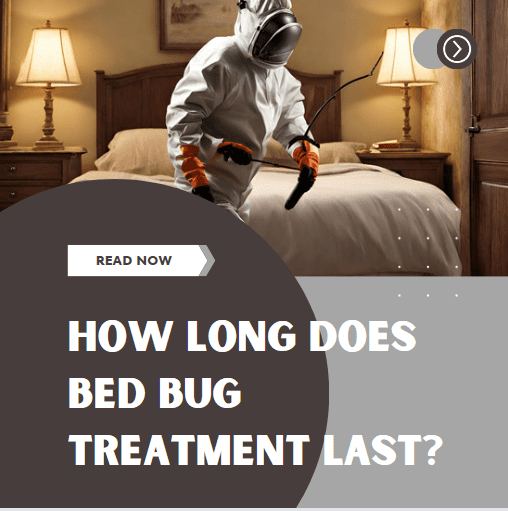Introduction: Understanding Bed Bug Treatment Duration
Welcome to our comprehensive guide on the duration of bed bug treatments. If you’re grappling with a bed bug infestation, understanding the longevity and effectiveness of various treatment methods is crucial. Bed bugs are notorious for their resilience and ability to disrupt peaceful living spaces. But with the right approach, you can reclaim your home from these unwelcome guests. ….Click Here to read more interesting Bed Bug Articles.
In this detailed exploration, we delve into the various treatment options available and assess their lasting impacts. From chemical solutions to heat treatments, each method comes with its own set of considerations regarding effectiveness over time. Our aim is to arm you with knowledge, enabling you to make informed decisions about managing and eradicating bed bugs from your environment.
As highlighted by the Environmental Protection Agency (EPA), bed bug treatments vary in duration and effectiveness based on several factors, including the method used and the level of infestation EPA Guidelines on Bed Bug Management. Understanding these nuances is key to choosing a treatment that not only addresses the immediate problem but also offers long-term relief.
Join us as we explore the intricate world of bed bug management. Whether you’re considering a DIY approach or seeking professional help, this guide will provide the insights you need to ensure the longevity and success of your chosen bed bug treatment method. Let’s embark on this journey towards a bed bug-free living space.
Types of Bed Bug Treatments and Their Expected Lifespan
When tackling bed bugs, selecting the right treatment is pivotal for long-term success. This section offers a deep dive into the most common treatments, revealing how long you can expect each to be effective in your battle against these persistent pests.
Chemical Treatments: Types and Duration
Chemical treatments are a popular choice, known for their potency and range. They come in various forms, each with a unique lifespan and mode of action. Pyrethroids, for instance, are synthetic chemical compounds that mimic natural insecticides. They are widely used due to their effectiveness but vary in longevity based on the infestation’s severity and the product’s formulation. Similarly, neonicotinoids, another class of chemicals, attack the nervous system of bed bugs, offering a different but equally effective approach. The University of Kentucky’s entomology department provides a comprehensive overview of these chemicals and their expected effectiveness University of Kentucky Bed Bug Treatment Information. It’s essential to understand that while these treatments can be powerful, their effectiveness also depends on correct application and adherence to safety guidelines.
Heat Treatment: Method and Longevity
Heat treatment stands out for its ability to penetrate hard-to-reach areas. This method involves raising the temperature in your home to a level that is lethal to bed bugs. The effectiveness of heat treatment is immediate, but its residual impact can be limited. Once the temperature returns to normal, there’s no ongoing effect to deter new bed bugs. Thus, while highly effective in the short term, heat treatment may require additional strategies for prolonged protection.
Cryonite (Freezing) Treatment: Duration and Efficacy
Cryonite treatment, also known as freezing, is a non-toxic approach that involves blasting bed bugs with extremely cold CO2. This method is known for its immediate impact, killing bed bugs on contact. However, similar to heat treatment, cryonite does not offer long-term protection and is best used in conjunction with other methods for sustained results.
Integrated Pest Management (IPM): A Holistic Approach
IPM is a comprehensive strategy that combines multiple treatment methods for a more robust and long-lasting solution. By integrating chemical treatments, heat or freezing methods, and preventive measures, IPM aims to manage bed bugs more effectively over time. This approach not only addresses current infestations but also focuses on prevention, reducing the likelihood of future outbreaks.
In the following sections, we will explore the nuances of each treatment method in detail, helping you to decide which is best suited to your specific bed bug situation. With the right knowledge and approach, long-lasting relief from bed bugs is within reach.
Factors Influencing the Duration of Bed Bug Treatments
The effectiveness and longevity of bed bug treatments are not solely determined by the methods used; several other factors play a crucial role. Understanding these variables is key to ensuring that your chosen treatment provides the most enduring solution possible.
Level of Infestation and Its Impact on Treatment Longevity

The extent of the bed bug infestation significantly affects how long a treatment remains effective. A minor infestation might be quickly resolved with a single method, while a more severe situation could require repeated or combined treatments. The University of Minnesota emphasizes the importance of early detection and treatment in controlling bed bugs more effectively University of Minnesota Guidelines on Bed Bug Infestations. The sooner an infestation is addressed, the higher the chances of a treatment providing long-term relief.
Environmental Factors Affecting Treatment Efficacy
Environmental conditions, such as temperature and humidity, also influence the effectiveness of bed bug treatments. For example, chemical treatments might evaporate more quickly or work less effectively in higher temperatures or humid conditions. Conversely, heat treatments might be more efficient in warmer environments. Acknowledging and adjusting to these environmental variables is crucial for maximizing the longevity of your treatment strategy.
Importance of Follow-Up and Monitoring
Post-treatment monitoring and follow-up are vital components of successful bed bug management. Regular inspections after the initial treatment help detect any resurgence of bed bugs, allowing for timely intervention. This proactive approach not only addresses any lingering pests but also helps in evaluating the effectiveness of the treatment over time, ensuring long-term control of the infestation.
By considering these factors, you can tailor your bed bug treatment strategy to be as effective and long-lasting as possible. Up next, we’ll delve into the essential steps for maintenance and prevention post-treatment, ensuring that once your living space is bed bug-free, it stays that way.
Maintenance and Prevention Post-Treatment
Successfully treating a bed bug infestation is a significant achievement, but the battle doesn’t end there. Ongoing maintenance and preventive measures are crucial to ensure the long-term effectiveness of the treatment. Implementing these strategies will not only help in keeping your space bed bug-free but also enhance the overall health and safety of your environment.
Regular Inspections and Why They Matter
Consistent monitoring is the cornerstone of post-treatment maintenance. Regularly inspecting your living spaces for signs of bed bug activity can catch any new infestations early, preventing them from growing uncontrollably. This process involves checking bed frames, mattresses, furniture, and other potential hiding spots. The Centers for Disease Control and Prevention (CDC) provide valuable insights into identifying bed bugs and their signs CDC’s Guide on Identifying Bed Bugs. Timely identification and action are crucial in maintaining a bed bug-free environment.
Preventative Measures to Prolong Treatment Effectiveness
In addition to regular inspections, implementing certain preventative measures can significantly reduce the likelihood of a recurring infestation. These include:
- Protective Covers for Mattresses: Using encasements designed to keep bed bugs out of mattresses and box springs can be a practical and effective measure. These covers not only prevent bed bugs from entering or escaping but also make it easier to spot any signs of infestation.
- Regular Cleaning and Vacuuming Practices: Maintaining cleanliness is key. Regular vacuuming of floors, furniture, and other areas can help remove any bed bugs or eggs. Washing bedding and clothing at high temperatures can also kill bed bugs.
By integrating these maintenance and prevention strategies into your routine, you can safeguard your space against future bed bug infestations. Keeping vigilant and proactive post-treatment is vital for enduring bed bug control. In the next section, we will explore the indicators that might necessitate considering re-treatment and the appropriate steps to take in such scenarios.
When to Consider Re-Treatment: Signs and Signals
Even after a thorough bed bug treatment, the possibility of a recurrence cannot be completely ruled out. Knowing when to consider re-treatment is essential for maintaining a bed bug-free environment. This awareness helps in promptly addressing any resurgence, thereby preventing the infestation from escalating.
Identifying Recurrence of Bed Bugs
The first step in determining the need for retreatment is to recognize the signs of a returning bed bug problem. These signs include:

- Visual Evidence: Spotting live bed bugs, especially after a few weeks of treatment, is a clear indication. Bed bugs are small, reddish-brown insects, often seen in mattress seams, bed frames, and other furniture.
- Bite Marks: Unexplained bite marks or itchy welts on your skin upon waking can be a symptom of bed bug activity. These bites are often in a line or cluster and usually appear on exposed areas of the body.
- Fecal Spots and Shed Skins: Tiny, dark fecal spots or shed skins in areas where bed bugs hide are telltale signs of their presence.
The Environmental Protection Agency (EPA) offers comprehensive guidelines for detecting bed bugs, emphasizing the importance of regular checks EPA’s Guide on Detecting Bed Bugs. Familiarizing yourself with these signs will enable you to act swiftly should bed bugs resurface.
Decision Making for Additional Treatments
Once bed bug activity is confirmed post-treatment, deciding on the next steps is crucial. Consider the following:
- Assess the Extent: Gauge the severity of the resurgence. Is it a few isolated bugs or a larger infestation? This assessment will influence the type and scale of the re-treatment needed.
- Consult Professionals: In cases of significant recurrence, consulting a pest control professional is advisable. They can provide a more thorough inspection and recommend an effective course of action.
- Evaluate Previous Methods: Reflect on the previous treatment methods used. Were they applied correctly? Could a different approach be more effective this time?
Being proactive and informed about the potential need for re-treatment ensures that you stay one step ahead in the battle against bed bugs. In the following section, we will delve into the nuances of DIY versus professional treatments, helping you make an informed choice about the best approach for lasting bed bug control.
DIY vs. Professional Treatments: Duration and Effectiveness
When facing a bed bug infestation, one critical decision is whether to opt for do-it-yourself (DIY) methods or seek professional treatment. Both approaches have their merits and limitations, particularly concerning their duration and effectiveness. Understanding these differences can help you choose the most suitable solution for your specific bed bug problem.
Comparing DIY Methods and Professional Approaches
DIY Treatments:
- Cost-Effectiveness: Typically more affordable, DIY treatments can be a good option for minor infestations.
- Accessibility: Over-the-counter products are readily available and can be applied at your convenience.
- Limitations: DIY treatments may not be as potent as professional ones and could fail to penetrate deep hiding spots of bed bugs, leading to a recurrence.
Professional Treatments:
- Expertise: Pest control professionals possess the expertise and equipment to handle extensive and complex infestations more effectively.
- Thoroughness: Professionals can implement more comprehensive methods, such as whole-room heat treatments, which might not be feasible for individuals to conduct.
- Long-Term Effectiveness Professional treatments often offer more lasting results, with guarantees and follow-up services.
The Role of Expertise in Ensuring Long-Lasting Treatment
The expertise of a pest control professional plays a significant role in the success and longevity of a bed bug treatment. Professionals are trained to identify, assess, and treat infestations comprehensively. They can also provide customized solutions based on the specific needs of your situation. For example, the National Pest Management Association (NPMA) provides insights into the latest and most effective bed bug treatment techniques used by professionals NPMA’s Expertise in Bed Bug Treatments. Their expertise not only addresses the immediate problem but also helps in preventing future infestations.
Deciding between DIY and professional bed bug treatments depends on various factors, including the severity of the infestation, budget, and personal preference. While DIY methods can be effective for minor issues, professional treatments are generally more reliable for long-term control and eradication of bed bugs. In the next section, we will summarize the key points discussed and provide final recommendations to ensure effective and long-lasting relief from bed bugs.
Conclusion: Ensuring Long-Lasting Relief from Bed Bugs
As we conclude this extensive guide on bed bug treatment duration, it’s essential to reiterate the importance of selecting the right treatment and maintaining vigilance post-treatment. The journey to a bed bug-free environment requires a combination of knowledge, persistence, and adaptability. Here, we summarize the key takeaways and offer final recommendations to help you maintain long-term control over these persistent pests.
Summarizing Key Points on Treatment Durability
- Choosing the Right Treatment: Understand the pros and cons of different treatment options, including chemical, heat, cryonite, and integrated pest management. Each has its unique duration and effectiveness, which should align with your specific infestation situation.
- Recognizing Influential Factors: The level of infestation, environmental conditions, and the quality of application significantly affect treatment outcomes. Early detection and appropriate response are critical for effective bed bug management.
- Commitment to Post-Treatment Maintenance: Regular inspections, preventive measures, and readiness to take action upon any signs of recurrence are vital for sustaining a bed bug-free environment.
Final Recommendations for Ongoing Bed Bug Management
- Stay Informed and Proactive: Keep abreast of the latest bed bug control strategies and be proactive in applying them. Resources like the EPA’s bed bug information page EPA’s Bed Bug Resources can be invaluable in this regard.
- Consider Professional Assistance for Severe Infestations: While DIY methods can be effective for minor issues, professional help is often necessary for more extensive infestations to ensure thorough and lasting results.
- Regular Monitoring and Adaptation: Bed bug situations can evolve, so it’s crucial to remain vigilant and adapt your approach as necessary. This includes regular inspections and being open to changing tactics if the current methods are not yielding desired results.
By following these guidelines and staying informed, you can achieve and maintain a living space free of bed bugs. Remember, the key to successful bed bug management lies in understanding the various treatment options, recognizing the factors that impact their effectiveness, and committing to ongoing maintenance and prevention. With these strategies in place, you can ensure long-lasting relief from bed bugs and enjoy the peace of mind that comes with a secure and comfortable home environment.




